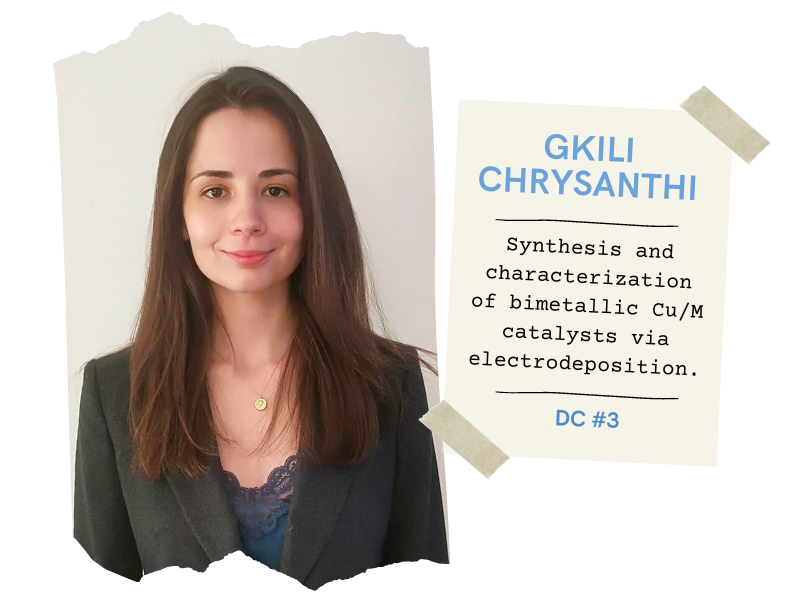
Received her BSc in Chemistry from the Department of Chemistry of the Aristotle University of Thessaloniki (AUTH) in 2019. For her bachelor thesis she enrolled at Centre for Research & Technology Hellas (CERTH)/Chemical Process & Engineering Research as a trainee. She continued her studies with a MSc in Electrochemical Systems Science and Technology (2019-2022) in AUTH earning a one–year scholarship in cooperation with Hellenic Petroleum S.A. (Greece). Her master dissertation was conducted under the supervision of Prof. Dimitra Sazou and examined the anodic growth of nanostructured tantalum oxide on Ta as well as the electrochemical behavior of Ta|Ta2O5 interfacial system in either acid or halide-containing media and the mechanism of the electrochemical deposition of polyaniline thin films onto Ta|Ta2O5 surfaces and characterize the redox properties, the morphology and their pseudocapacitive properties for energy storage devices. She has received the award for the “Best Greek Master Thesis of Science of Condensed Matter and Materials for the year 2022. authored related refereed publications. Moreover, during her graduate training, she has served as a laboratory teaching assistant. She is a member of the International Society of Electrochemistry (ISE).

Synthesis and characterization of bimetallic Cu/M catalysts via electrodeposition.
Project objectives: To design bimetallic Cu/M catalysts via (co)-electrochemical deposition. To investigate the composition – morphology – performance relationship using different M elements. To explore the reaction mechanism on the different electrodes using operando Raman and infrared spectroscopy.
Working context: DC#3 will be hosted at the University of Montpellier (France) and will be enrolled in the PhD school of the same institution, supervised by Prof. D. Voiry. Part of the activity will be carried on during secondment periods at ESRF for the ex-situ and in-situ characterization of the Cu/M catalyst and at ADVENT to be trained on membranes for CO2RR processes.
Expected outcome:
- Prepare modified electrodes with Cu/M catalysts with high activity and high density of active sites.
- Characterize the structure and the composition of the electrodes.
- Precisely estimate the intrinsic activity of the different Cu/M catalysts.
- Elucidate the reaction mechanism involved in the formation of C1 and C2 products using Raman and infra-red spectroscopy.
- Optimize the scalability and the operating stability of the Cu/M catalyst.

